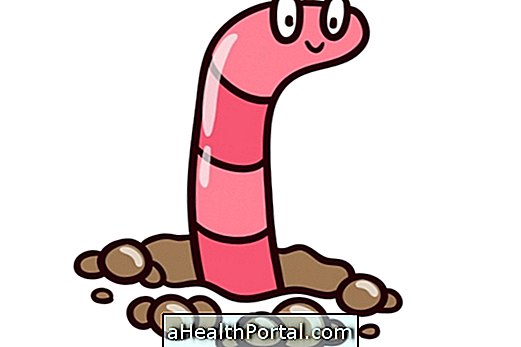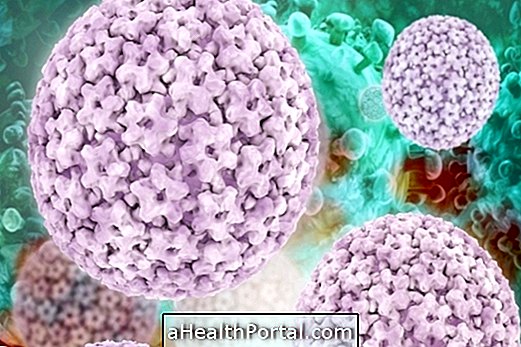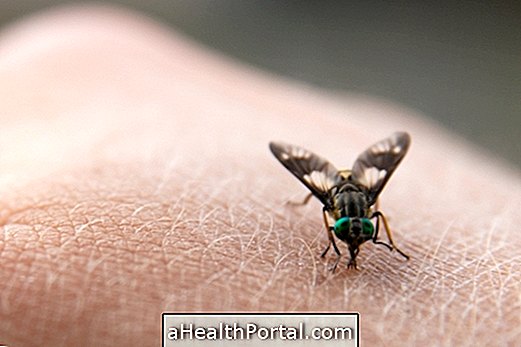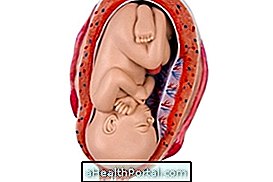Listeriosis is an infectious disease caused by the bacterium Listeria monocytogenes . This bacteria can be acquired from the consumption of contaminated food and water, such as unpasteurized milk, cheeses, vegetables, seafood and sausage.
The symptoms of listeriosis are similar to those of influenza, meaning there is fever, body aches and chills, which are usually accompanied by vomiting and diarrhea. In more severe cases, this bacteria can cause meningitis, but this is rarer. Asymptomatic infections can occur at all ages, but Listeria monocytogenes generally infects children, pregnant women, immunocompromised people, and the elderly, precisely because the immune system is more fragile.
To avoid this bacteria, it is important to always wash your hands and food before consuming it. In addition, whenever there is confirmation of listeriosis, notify the health surveillance so that the cause of the infection can be investigated.

How transmission occurs
Listeria monocytogenes can be found in various foods because of their ability to survive at different temperatures and environmental conditions, especially lower temperatures, and huge pH variations. Thus, it is able to survive the whole system of food processing and handling.
The transmission of this infectious agent occurs mainly from the consumption of contaminated food and water, for example:
- Unpasteurized milk;
- Dairy products, such as curd cheese, cheeses and pates;
- Fruits;
- Vegetables;
- Vegetables;
- Smoked and frozen meats, fish and seafood;
- Sausages such as sausage.
Although these foods may contain the bacteria, it does not mean that they always have this infectious agent and that even when eating the food, the person will be infected and will have symptoms. The bacteria can also be found in soil, water and vegetation, and it is important to wash hands and food before eating.
Symptoms of listeriosis
The symptoms of listeriosis may be similar to those of influenza, but it is usually accompanied by some gastrointestinal disorder, such as diarrhea. Symptoms vary depending on the person infected, but in general they are:
- Muscle aches;
- High fever, higher than 38ºC;
- Vomiting;
- Chills;
- Headache;
- Loss of appetite;
- Tiredness.
In more serious and rare cases, Listeria monocytogenes can spread into the bloodstream and reach the nervous system, where it can cause meningitis, which is an inflammation in the membranes that surround the brain. See the symptoms of meningitis.

How is the diagnosis made?
The diagnosis of listeriosis is made in the laboratory from the isolation of the microorganism. The bacteria can be isolated from various biological materials, such as blood, cerebrospinal fluid, amniotic fluid, placenta, gastric lavage, or stool, depending on the symptoms and indication of the physician.
What is the treatment of listeriosis
The treatment of listeriosis is done with the use of antibiotics. The use of penicillin or ampicillin associated with aminoglycosides, such as gentamicin, is generally recommended by the doctor. In case of allergy to penicillin, the alternative is to make use with the sulfamethoxazole-trimethoprim, known as bactrim. See more about ampicillin and bactrim.
How to prevent and prevent listeriosis
To avoid contamination by Listeria, it is important to adopt some hygiene measures, such as:
- Wash hands before meals;
- Wash food well as fruits, vegetables before eating;
- Store food properly, know it here.
- Keep the refrigerator clean;
- Avoid consumption of processed and unpasteurized foods.
Listeriosis in Brazil is an underreported disease, that is, when the identification of the bacteria is usually not communicated to sanitary and epidemiological surveillance, it is not possible to investigate the source of contamination. Thus, once the first symptoms appear and listeriosis is confirmed, it is advisable to inform health surveillance so that effective preventive measures are implemented, such as banning educational products and programs.























